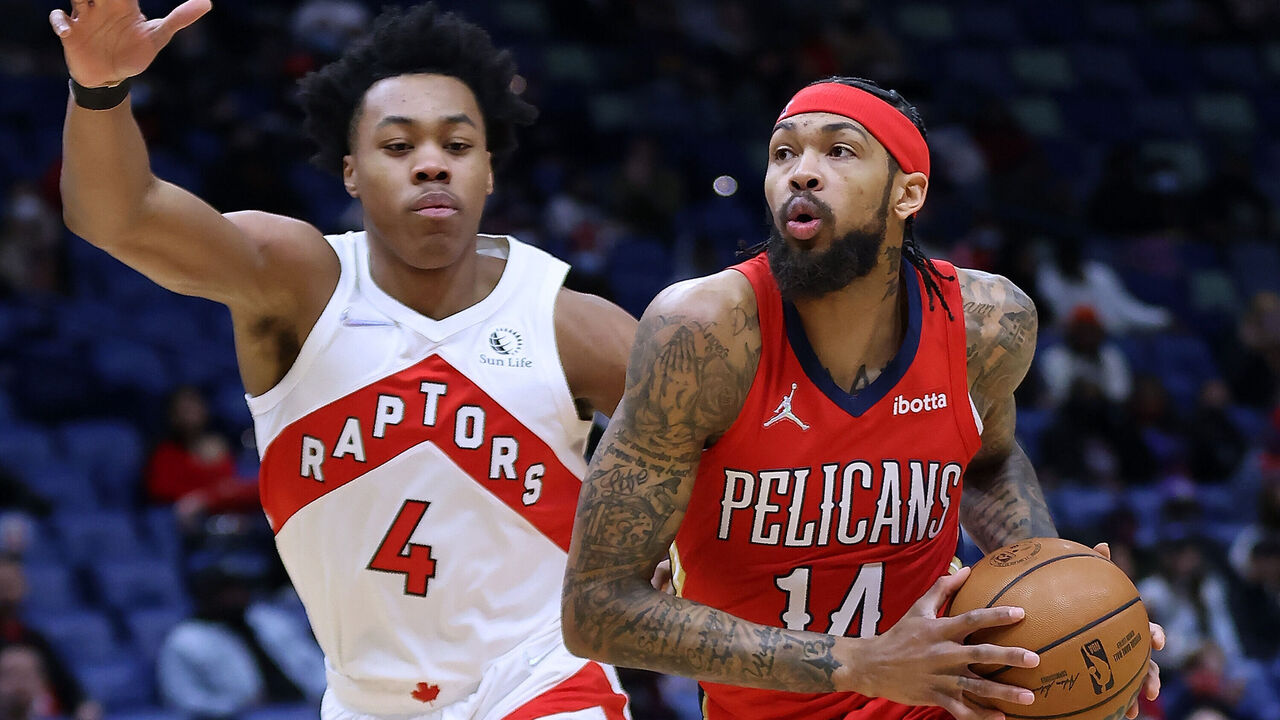Trying to make sense of Raptors' move for Brandon Ingram
If it wasn't for the Dallas Mavericks making a decision of historically baffling proportions, the Toronto Raptors would've easily taken home the title of deadline week's most confusing team when they traded for Brandon Ingram. It wouldn't be the first time.
But unlike their trade for Jakob Poeltl on the eve of the 2023 deadline (or their shortsighted deal for Rudy Gay in 2013), the 2024-25 Raptors had publicly committed to a rebuild. That, and the fact Toronto employed multiple veterans on expiring contracts, should've made the 16-35 Raptors an obvious seller at the deadline, not a buyer.
It's possible the team wouldn't have found suitors or recouped the second-round draft capital it presumably sought for players like Chris Boucher, Bruce Brown, and Kelly Olynyk. In a vacuum, some might see Ingram's undeniable talent and say moving Brown, Olynyk, Indiana's top-four-protected 2026 first-rounder, and a 2031 second-rounder is a better outcome than turning Brown and Olynyk into underwhelming picks or doing nothing at all. But context and timelines matter.
Yes, Ingram's sheer talent and raw production are impressive. He's a lanky self-creator who has averaged 23 points while shooting 51% inside the arc, 37% from deep, and 85% from the free-throw line over the last six years. He's also turned himself into an impressive playmaker, averaging 5.6 assists per game over the last four years while boasting a 100th-percentile assist rate among wings this season, according to Cleaning The Glass. And he was available for relatively cheap while still only 27 years old.
However, there's a reason for that, and it extends beyond his expiring contract. Ingram's mid-range-heavy game and overall shot diet limit his efficiency, his defensive contributions have rarely measured up to his defensive length, and he's missed 31.2% of his teams' games over the last seven-and-a-half seasons. He's averaged 56.4 games played per 82 contests since 2017-18.
Ingram's base statistics, age, and upside likely would've landed him a max contract under the previous collective bargaining agreement, but the new CBA's more punitive tax penalties and apron restrictions have teams rethinking how and when to spend their money. It's too difficult to construct a contending team when you're paying max or near-max money to a high-usage scorer who isn't especially efficient, isn't a consistent defender, and can't stay healthy. With reports that Ingram, a one-time All-Star, is seeking top dollar, you can understand why teams weren't lining up to trade for the pending free agent.
Ingram is the type of talented scorer who comes with a classic catch-22. He's not quite good enough to be the No. 1 option on a contender, but he's also not threatening enough off the ball to be a great No. 2 or No. 3. He resides in the same awkward middle ground as Toronto's all-time leading scorer, DeMar DeRozan.
On the surface, that doesn't sound like the type of player who fits best next to franchise star Scottie Barnes, a playmaking forward with limited range who needs movers and spacers around him.

It's possible that head coach Darko Rajakovic's movement-heavy, quick-thinking offensive system brings out the best and most efficient version of Ingram, just as it's done for RJ Barrett. If that's the case, and Ingram stays healthy, this will wind up going down as a shrewd, buy-low acquisition for a team that doesn't normally land players of Ingram's caliber on the free-agent market. Plus, the Raptors still employ all the promising youngsters they did before acquiring Ingram and control all of their own first-round picks. But there are still risks.
For this deal to be a home run (or even an extra-base hit), a couple more dominoes must fall in Toronto's favor. First, the Raptors can't let the currently injured Ingram sink their 2025 lottery odds. This move doesn't have to mean the front office is suddenly gunning for the play-in tournament, although it speaks to how strange this transaction is that Ingram can best help his new team by not playing right now. Second, Ingram must either be re-signed at a reasonable price or signed-and-traded for a greater return than the Raps coughed up to get him.
There's a scenario where this trade ends up a low-risk, high-reward gamble for one of the many franchises that needs to hit on such bets in order to accumulate top talent. But there are too many "ifs" associated with the deal to feel comfortable with a 16-35 team pulling the trigger on it.
Joseph Casciaro is theScore's lead Raptors and NBA reporter.